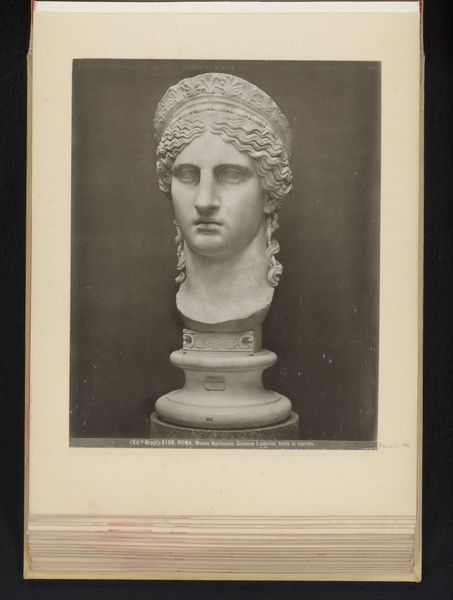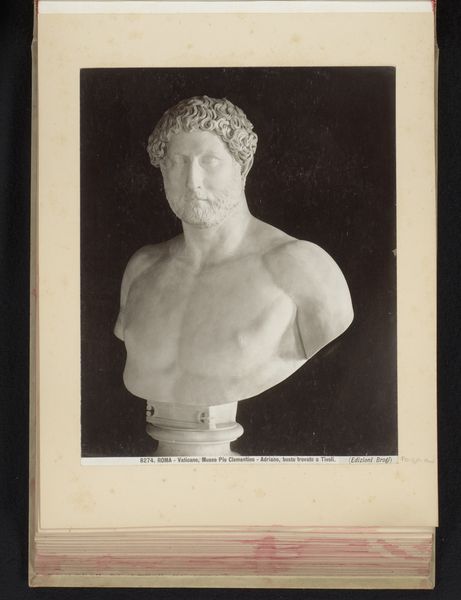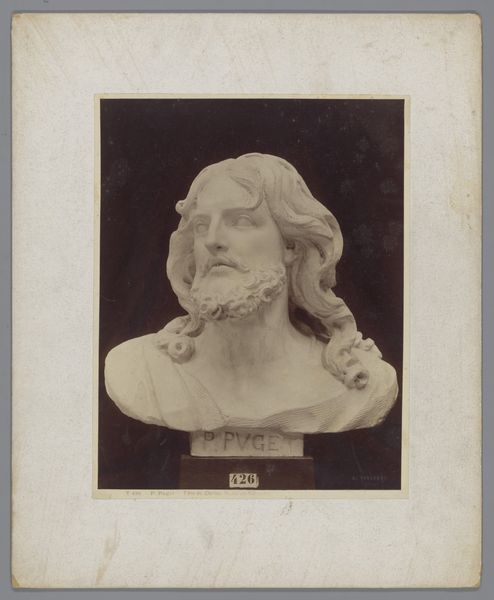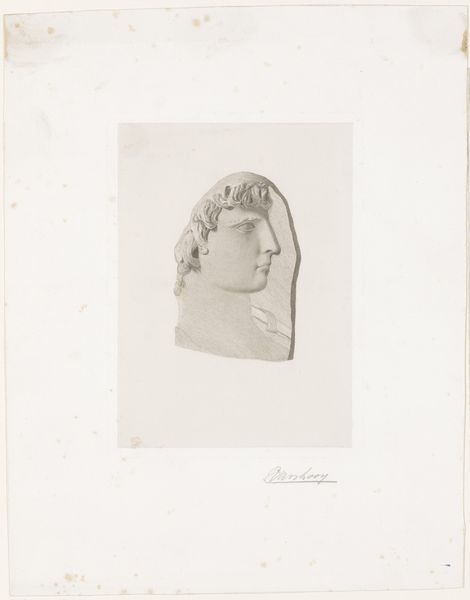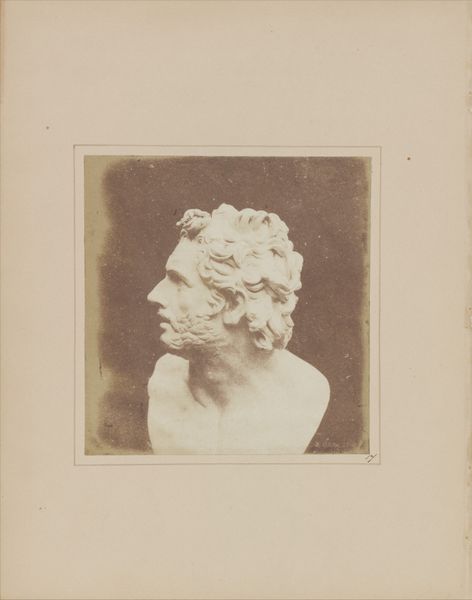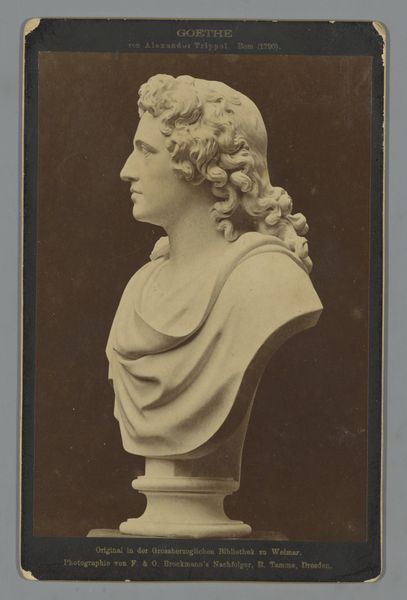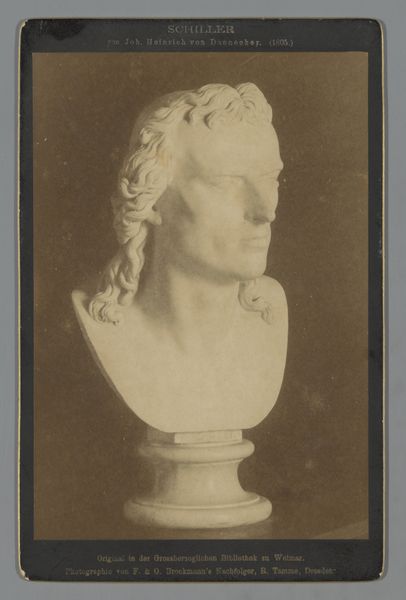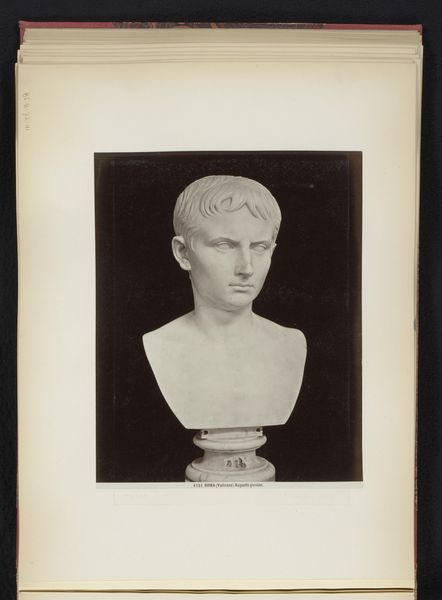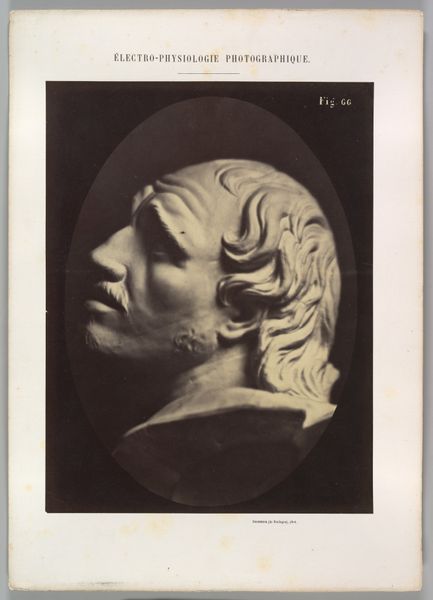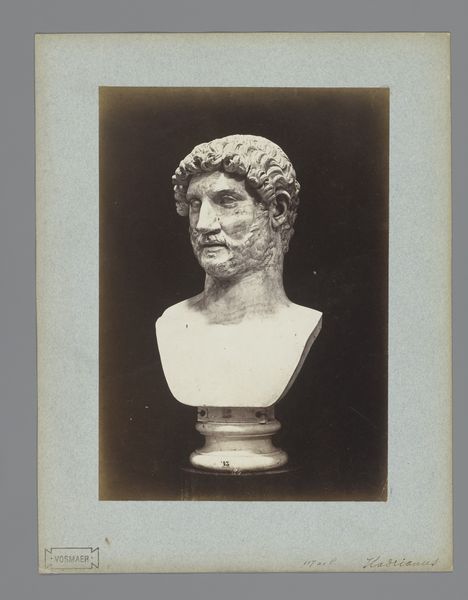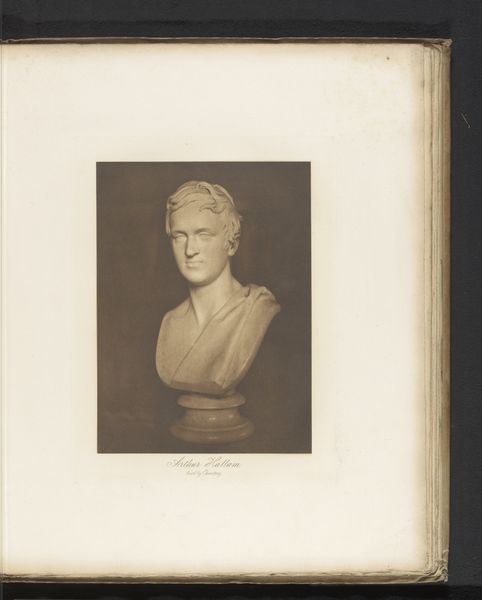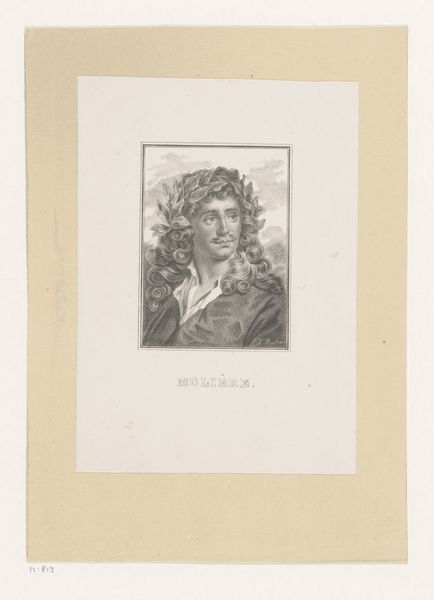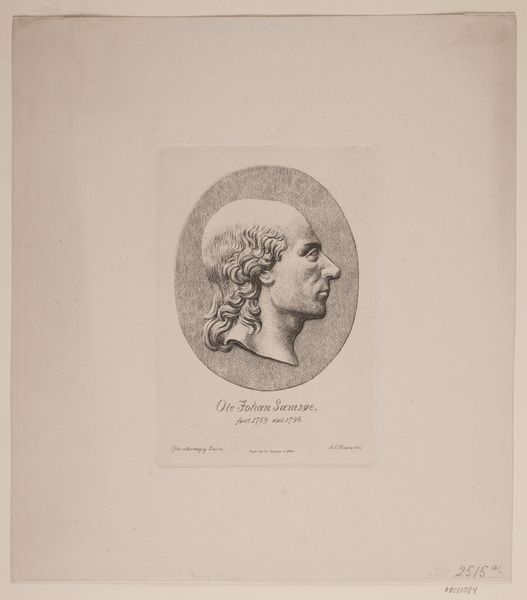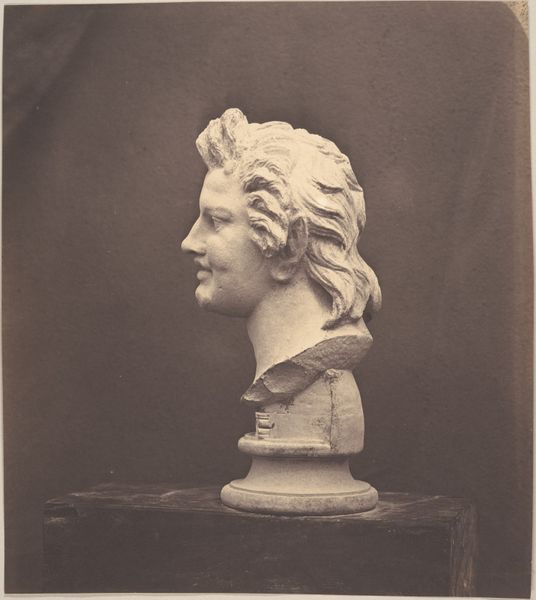
Sculptuur in het Museo Nazionale Romano te Rome, (vermoedelijk) voorstellende het hoofd van Medusa before 1907
0:00
0:00
carving, sculpture, marble
#
portrait
#
carving
#
sculpture
#
greek-and-roman-art
#
figuration
#
ancient-mediterranean
#
sculpture
#
marble
Dimensions: height 250 mm, width 197 mm
Copyright: Rijks Museum: Open Domain
Curator: Let's examine this photograph titled "Sculptuur in het Museo Nazionale Romano te Rome, (vermoedelijk) voorstellende het hoofd van Medusa," attributed to Edizione Brogi, dated before 1907. What strikes you first? Editor: The smoothness, strangely. It is so refined. I’m drawn to the texture; the marble appears almost like skin, conveying a delicate yet firm impression, and notice the labor that was required to bring forth such material mastery! Curator: Indeed. And the history! Medusa's image has always served multiple roles, hasn't she? A fearsome gorgon, of course, but also, particularly in Roman art, an emblem of protection, even imperial power. Often used to adorn shields, armor, and public buildings, she symbolized strength and divine favor. Editor: Yes, strength derived through repurposed horror! The social implications are immense: What message did this impart to those subject to Roman rule, or those seeking its protection? Moreover, marble, itself a costly and weighty material, inherently speaks of power, the means to obtain, move, and manipulate such substance! Curator: Quite right. Consider the gaze. The sculpture captures her in repose, after the beheading, of course, rendering her powerless. This post-violence depiction allows the viewer a certain level of comfort and perhaps encourages a kind of objectification, turning the once monstrous Medusa into a relic of conquered terror. The museum setting itself, the Museo Nazionale Romano, reinforces this taming narrative by framing it within a narrative of civic authority. Editor: I wonder, too, about the hands involved in its creation: The selection of the stone, its extraction, the tools used to carve, the social dynamics between the sculptor and their patrons... all invisibly present within the marble. Was it a citizen or slave whose artistry crafted her countenance? Whose story are we truly observing here? Curator: Excellent questions! It underscores how objects, particularly those rooted in myth and power, can be viewed through varied lenses of socio-political dominance, or labor conditions that brought forth this incredible piece of antiquity. Editor: Ultimately, it reinforces how every viewing experience is but one encounter within this object’s vast and complex life, still so palpable in the cold and smooth materiality of it.
Comments
No comments
Be the first to comment and join the conversation on the ultimate creative platform.
